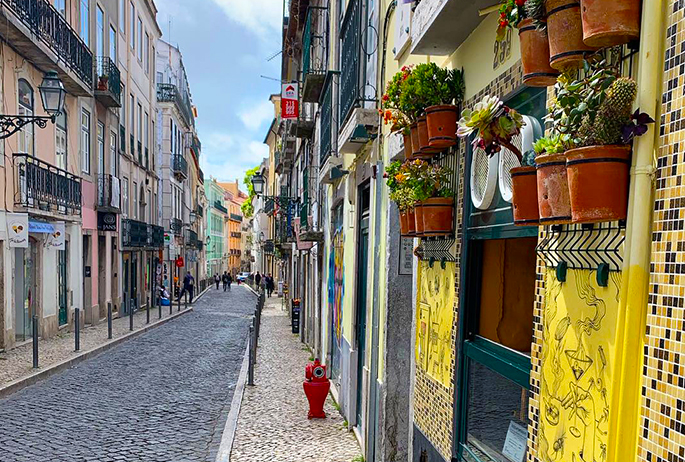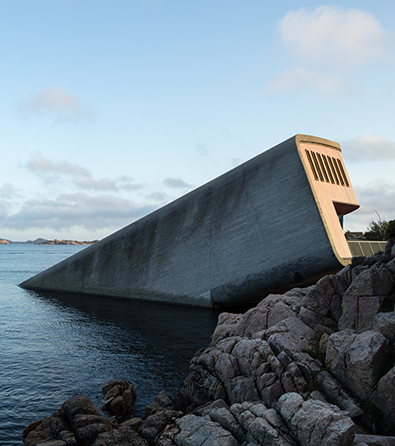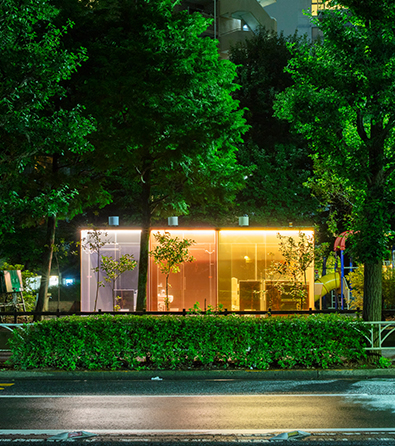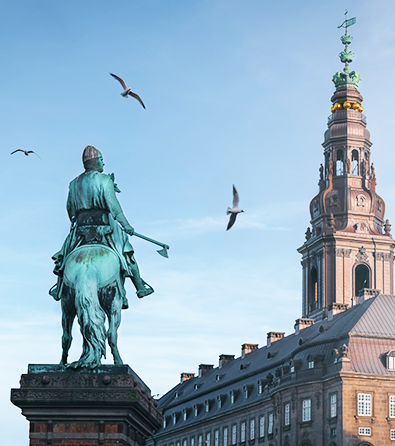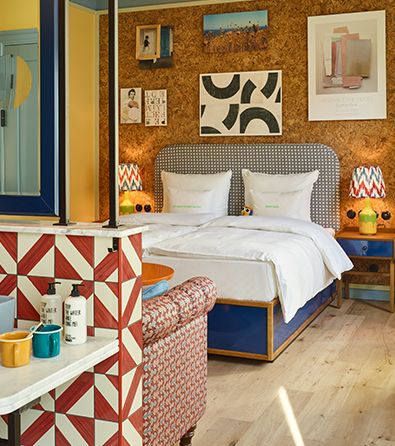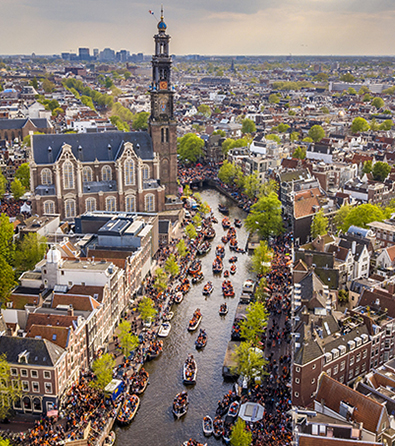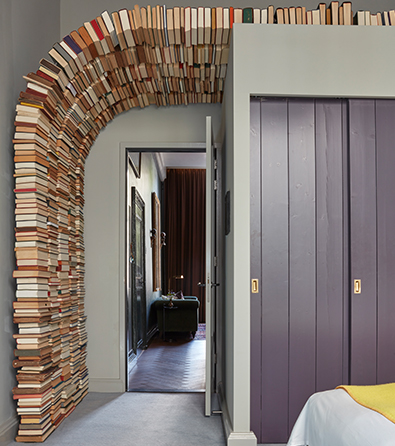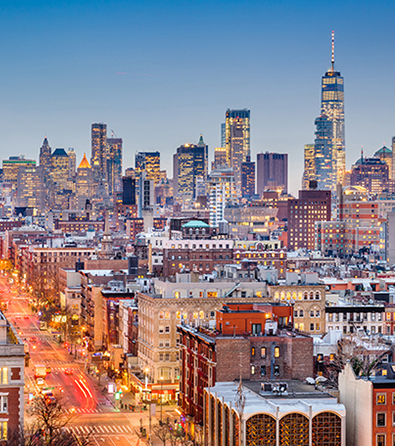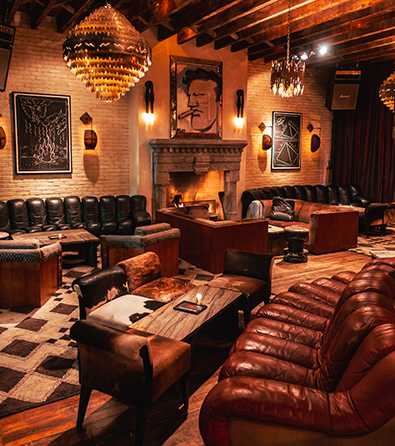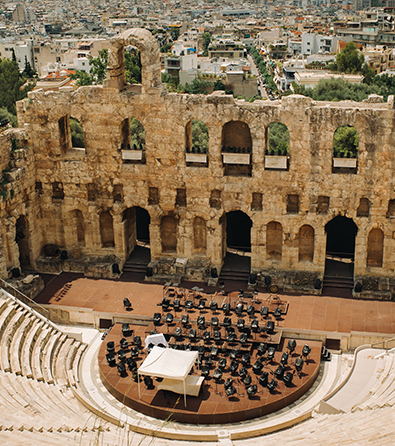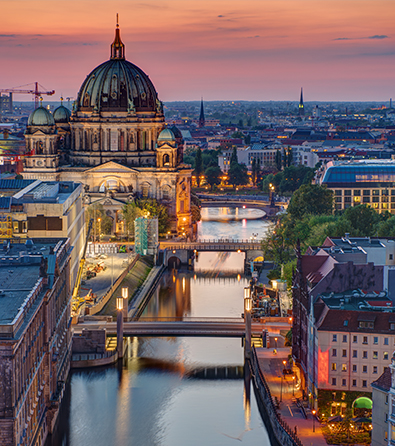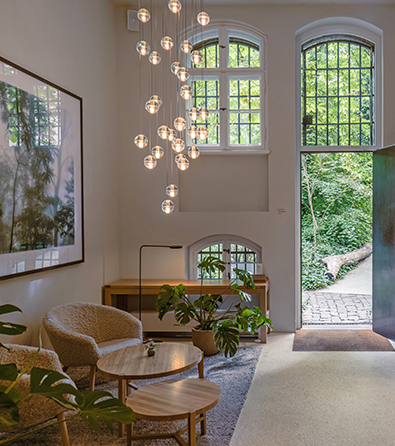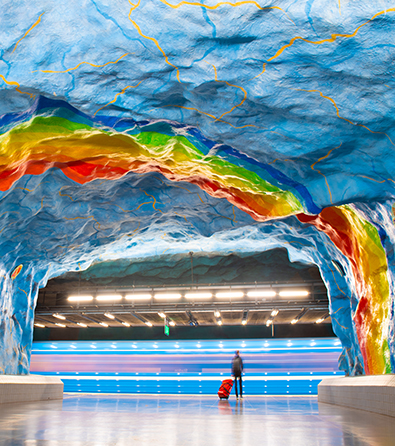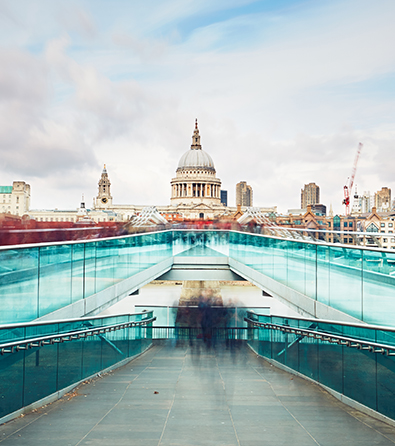Lisbon, the capital of Portugal, is a city where rich history, artistic energy, and breathtaking landscapes converge. Built across seven hills along the Tagus River, it charms with azulejo-tiled façades, steep cobbled streets, and iconic yellow trams. Beyond Gothic churches and miradouros, the city rewards culture lovers with standout museums and galleries like MAAT and the Museu Nacional do Azulejo, vibrant creative hubs in Belém, Chiado, and LX Factory, and street art woven through Alfama and Bairro Alto. This guide highlights the best museums and galleries, architecture and street art, design shops and concept stores, neighborhood routes, and practical tips to plan a culture-first trip.
To access our exclusive Lisbon Treasure Map, simply click the attached link and become a Culture Treasures member. The map pins every place in this guide and adds bonus cafés, boutiques and cultural venues. Planning your stay? Explore our guide to the best design hotels in Lisbon, along with our curated urban travel essentials and long flight essentials for a comfortable journey.
Art Museums:
MAAT – Museum of Art, Architecture & Technology (Belém / riverfront)
Why go: Lisbon’s museum for art, architecture, and technology, set in AL_A’s wave-like riverside building and linked to the historic Central Tejo power station.
Tip: Walk the roof terrace for Tagus views and combine your visit with the Central Tejo “Electricity Factory.” Open Wednesday–Monday; closed Tuesday.
MAAT pairs a contemporary gallery building by Amanda Levete’s studio AL_A with the early-20th-century power station next door. The new structure’s 3D-glazed ceramic skin mirrors light from the river, and its landscaped roof invites you to walk over, under, and through the museum. Inside, rotating exhibitions span art, design, and technology, while the broader campus (MAAT Gallery, MAAT Central, and MAAT Garden) hosts talks, workshops, and large-scale installations that foreground Lisbon’s forward-looking culture.
Museu Nacional de Arte Antiga (Santos / Janelas Verdes)
Why go: Portugal’s leading fine-arts museum, with masterpieces from the 12th–19th centuries, look for Bosch’s Temptation of St. Anthony triptych, the 15th-century Saint Vincent Panels, Namban screens, and the 1506 Belém Monstrance.
Tip: Pair the galleries with a coffee in the river-view garden; arrive early for the Bosch and Saint Vincent rooms, which get busy.
Museu Nacional de Arte Antiga presents one of Europe’s great collections across painting, sculpture, gold and silver, textiles, ceramics, and prints. Housed in the Palácio Alvor-Pombal on Rua das Janelas Verdes, the museum traces Portuguese and European art from the Middle Ages to the 19th century. Highlights include Hieronymus Bosch’s Temptation of St. Anthony triptych, the iconic Saint Vincent Panels attributed to Nuno Gonçalves, Japanese Namban folding screens reflecting Portugal’s Age of Discoveries, and the Belém Monstrance in gold and enamel from 1506. Galleries are well signed and compact enough for a focused visit in 90–120 minutes.
MAC/CCB – Museum of Contemporary Art (Belém / CCB)
Why go: Lisbon’s new hub for 20th–21st-century art, with highlights from the Berardo Collection alongside other holdings in the Centro Cultural de Belém.
Tip: Pair with a Belém loop (MAAT, Jerónimos, riverside walk). Weekends can be busy, check current shows and consider timed entry.
Opened in 2023 in the former Berardo Museum space, MAC/CCB surveys key movements from early modernism to today through rotating exhibitions and collection displays. Expect a clear walk through avant-gardes, pop, minimal and conceptual strands, plus temporary shows that bring the timeline up to the present.
Museu Nacional do Azulejo (Xabregas / Madre de Deus Convent)
Why go: Portugal’s tile art story in one place, from 15th-century beginnings to today, set inside a 16th-century convent.
Tip: Closed Monday. Don’t miss the church interiors and the 36-meter panorama of Lisbon before the 1755 earthquake.
Housed in the former Madre de Deus Convent, this museum traces techniques, patterns, and uses of azulejos across centuries. The highlight is the vast blue-and-white city panorama, alongside cloisters and chapels that show tiles in situ, great for connecting craft, architecture, and urban history.
Contemporary art galleries:
Galeria Belo-Galsterer (Avenida da Liberdade area)
Why go: Independent space curating thoughtful contemporary shows by Portuguese and international artists.
Tip: Check the program before you go, exhibitions rotate and opening hours can vary.
A stalwart of Lisbon’s scene, Belo-Galsterer focuses on rigorous solo and group exhibitions across painting, sculpture, photography, and installation, often foregrounding cross-cultural dialogue and new commissions.
Galeria Vera Cortês (Alvalade)
Why go: One of Lisbon’s most influential contemporary programs, known for smart, research-driven exhibitions.
Tip: This is a working gallery, arrive during gallery hours or book ahead for previews and talks.
Vera Cortês champions mid-career and emerging voices with carefully produced shows and publications, making it a reliable stop to catch Lisbon’s most current conversations in art.
Monitor Lisbon (Campo de Ourique)
Why go: Lisbon outpost of the Rome-based gallery, bringing an international roster into dialogue with local practices.
Tip: Openings are lively; if you prefer quiet viewing, visit mid-afternoon on weekdays.
Monitor stages concept-forward exhibitions across media, installation, video, and sculpture are frequent, connecting Lisbon audiences to broader European currents.
HANGAR – Artistic Research Center (Graça)
Why go: Hybrid residency, project space, and learning hub where you can catch process-driven shows and talks.
Tip: Public hours typically run Wed–Sun when exhibitions are on; check the calendar as programs are cyclical.
HANGAR supports residencies, workshops, and exhibitions that foreground experimentation and global exchange, often spotlighting artists and curators from Africa and the diaspora alongside Lisbon-based practitioners.
3+1 Arte Contemporânea (Chiado/Bairro Alto)
Why go: Gallery with a strong curatorial voice, mixing Lisbon-based and international artists across media.
Tip: Pair a visit with nearby spaces in Chiado/Bairro Alto to build a compact gallery loop.
Known for clear, idea-led shows and careful installation, 3+1 presents painting, sculpture, video, and photography in tightly edited exhibitions that reward slow looking.
Underdogs Gallery (Marvila)
Why go: Lisbon’s anchor for urban and post-urban art, gallery shows plus murals and public art across the city.
Tip: Combine the gallery with a walk through Marvila to spot large-scale works; opening hours are fixed, so time your visit.
Underdogs bridges the gallery and the street, producing exhibitions, editions, and citywide interventions that connect contemporary visual culture with Lisbon’s evolving neighborhoods.
Design Venues and Shops:
LX Factory (Alcântara / Rua Rodrigues de Faria)
Why go: Lisbon’s top creative compound, former factories turned into indie bookstores, art studios, and concept shops.
Tip: Visit on Sundays for the open‑air market. Don’t miss Ler Devagar, one of Portugal’s most iconic bookstores.
This industrial complex from the 19th century has been transformed into a cultural and retail destination packed with art spaces, design shops, cafés, and startup offices. It blends gritty post-industrial charm with contemporary creativity. Among its highlights is Ler Devagar, a cavernous bookstore set inside a former printing press. LX Factory is ideal for browsing design-forward boutiques, seeing local exhibitions, or enjoying rooftop drinks with views of the 25 de Abril Bridge.
Village Underground Lisboa (Alcântara / Near LX Factory)
Why go: Lisbon’s most original creative space, built from shipping containers and buses, ideal for urban design lovers and music fans.
Tip: Check their schedule for DJ sets, art shows, and rooftop events. The café inside a converted bus is a local favorite.
Part of the global Village Underground network, this vibrant hub occupies recycled shipping containers and double-decker buses repurposed into studios, offices, and event spaces. It hosts concerts, exhibitions, and creative workshops that attract Lisbon’s art and music crowd. VUL stands as a model of adaptive reuse and sustainable design in the city’s cultural scene, offering a raw and energetic atmosphere for collaboration and inspiration.
Design Concept Stores:
Cortiço & Netos (Marvila) – A hidden gem for ceramic enthusiasts, showcasing thousands of discontinued Portuguese tiles rescued from factories and arranged by pattern, color, and history.
Embaixada (Príncipe Real) – A stunning neo-Moorish palace transformed into a shopping gallery featuring Portuguese fashion, home décor, accessories, and sustainable brands across elegantly restored rooms.
A Vida Portuguesa (Chiado & Intendente) – A celebration of Portuguese heritage, offering beautifully packaged local products such as soaps, ceramics, textiles, and vintage-inspired stationery in nostalgic settings.
Boa Safra (Anjos) – A Portuguese furniture brand and showroom committed to sustainable design, showcasing elegant, locally crafted pieces made with responsibly sourced materials.
REAL Slow Retail (Campo de Ourique) – A boutique concept store dedicated to ethical, mindful living, offering fashion, wellness, and home goods made with transparency and sustainability at heart.
Lisbon Design Week (Citywide / Every May)
Why go: The most important annual event spotlighting contemporary Portuguese design across disciplines.
Tip: Plan ahead—exhibitions, studio visits, and talks take place across multiple neighborhoods and require registration.
Held every May, Lisbon Design Week (LDW) activates galleries, ateliers, design stores, and cultural venues across the city. The program includes curated exhibitions, brand presentations, architecture walks, and open studios, providing a rare behind-the-scenes look at the creative process. With a focus on both established and emerging talent, LDW is a key event for those interested in graphic, product, fashion, and interior design in Portugal.
Historical treasures:
With its hilly terrain and captivating history, Lisbon invites you on an extraordinary journey best experienced through the charming streets and winding alleys aboard a Tuk Tuk car, accompanied by a knowledgeable guide. As you venture through the city’s diverse neighborhoods, an enchanting tapestry of stories and architectural marvels unravels before your eyes. Tracing its roots back to ancient Phoenician and Roman times, Lisbon has stood witness to the ebb and flow of empires, the glory of the Age of Discoveries, the resilience following devastating earthquakes, and the vibrant rebirths that have shaped its identity. Your guide, a custodian of the city’s rich heritage, will regale you with captivating tales of intrepid explorers, audacious conquerors, and visionary artists, unveiling the layers of Lisbon’s enthralling narrative.
Belém Tower & Jerónimos Monastery (Belém District)
Why go: Two UNESCO World Heritage landmarks that showcase Portugal’s Age of Discovery through architecture and grandeur.
Tip: Combine your visit with a walk along the riverfront promenade. Tickets often sell out—consider booking in advance.
Belém Tower (Torre de Belém), built in the early 16th century, once served as a ceremonial gateway to Lisbon and a point of defense along the Tagus River. With its ornate Manueline details and striking riverside setting, it’s one of Lisbon’s most iconic monuments. Just a short walk away, the Jerónimos Monastery (Mosteiro dos Jerónimos) stands as a masterpiece of late Gothic architecture. Commissioned by King Manuel I, the monastery honors Vasco da Gama’s voyage to India and houses his tomb. The stunning cloisters and vaulted ceilings reflect Portugal’s maritime glory and artistic heritage.
Santa Justa Lift (Baixa / Elevador de Santa Justa)
Why go: A Neo-Gothic iron elevator linking Baixa to Carmo Square—designed by a student of Eiffel.
Tip: Arrive early to avoid long lines, especially in summer. The panoramic viewing platform offers one of the best city views.
Completed in 1902, the Santa Justa Lift is an iconic vertical transport system that connects Lisbon’s lower downtown (Baixa) with the higher Carmo Square. Designed by Raoul Mesnier du Ponsard, a Portuguese engineer and apprentice of Gustave Eiffel, the structure is a masterpiece of iron architecture with filigree Neo-Gothic detailing. Originally steam-powered, it was electrified in 1907 and remains a functional part of the city’s public transport system. More than a practical solution to Lisbon’s hills, the lift is a celebrated symbol of the city’s industrial-era ingenuity and offers sweeping views from its observation deck.
Carmo Convent & Archaeological Museum (Chiado / Convento do Carmo)
Why go: A hauntingly beautiful Gothic ruin that survived the 1755 earthquake—now a museum of Portuguese antiquities.
Tip: Visit late afternoon for dramatic lighting and fewer crowds. The roofless nave offers one of the most atmospheric experiences in the city.
Founded in 1389 by military hero Nuno Álvares Pereira, the Carmo Convent was once Lisbon’s grandest Gothic church. Its collapse during the 1755 earthquake left only skeletal arches and open sky—turning the ruins into a poetic reminder of the city’s resilience. Today, the site houses the Carmo Archaeological Museum, which presents a diverse collection of artifacts including prehistoric relics, Roman epigraphy, medieval tombs, and even two mummies. Together, the architecture and collection offer a powerful, immersive walk through Portugal’s layered history.
Neighborhoods:
Beyond the historical attractions, immerse yourself in the unique charm of Lisbon’s neighborhoods. Wind your way through the labyrinthine alleys of Alfama, the city’s oldest district, where the melancholic melodies of Fado music resonate from rustic taverns. Traverse the bohemian streets of Bairro Alto, with its vibrant nightlife and colorful façades. Indulge in the elegance of Chiado, adorned with upscale shops and bustling cafés. At the heart of Lisbon, Rossio Square beckons with its magnificent calçada portuguesa, an intricate mosaic of Portuguese pavement, where locals and visitors converge amidst the vibrant atmosphere.
The yellow tram in Lisbon, known as “Elétrico” in Portuguese, is one of the city’s most iconic symbols and a popular means of transportation among both locals and tourists. The most famous of these trams is Tram 28, which winds its way through Alfama, Baixa, Estrela, and Graça. These classic yellow trams, which have been operating since the early 20th century, are not only a charming way to explore the city but also a practical mode of transport over Lisbon’s hilly terrain.
Take A Break:
Amidst your art, design, and historical explorations of Lisbon, take a moment to refuel your body and soul with the city’s exceptional culinary offerings. Lisbon’s vibrant food scene offers the perfect interlude, allowing you to indulge in the flavors of Portugal and recharge for your next adventure. From quaint cafés to bustling markets and inviting eateries, immerse yourself in the local gastronomy and experience the delightful harmony between culture and cuisine that Lisbon has to offer.
Cervejaria Ramiro (Intendente) – A legendary seafood institution in Lisbon renowned for its garlicky shrimp, crab, and other ocean treasures in a lively, no-frills setting.
Taberna da Rua das Flores (Chiado) – A cozy, contemporary “tasca” on Rua das Flores offering inventive takes on traditional Portuguese petiscos.
A Cevicheria (Príncipe Real) – A vibrant Peruvian-inspired restaurant by Chef Kiko Martins serving masterful ceviche amid stylish surroundings.
Tasca da Esquina (Campo de Ourique) – Chef Vítor Sobral’s modern corner tavern blending Portuguese flavors with seasonal, creative presentations.
Taberna Portuguesa (Bairro Alto/Bica) – A traditional Portuguese tavern where you can savor hearty local tapas in a historic Lisbon neighborhood.
Bairro do Avillez (Chiado) – A dynamic food court concept by José Avillez offering a mix of Portuguese flavors across multiple dining concepts under one former convent roof.
Pastéis de Belém (Belém) – The original bakery famed since 1837 for producing Lisbon’s legendary custard tarts using a secret convent recipe.
Pensão Amor (Cais do Sodré) – A bohemian bar in a converted Pombaline-era brothel, offering eclectic décor, live music, and an unforgettable atmosphere.
Park (Bairro Alto rooftop) – A rooftop bar perched atop a parking garage, perfect for sipping creative cocktails while taking in sweeping views of Lisbon at sunset.
O Bom, O Mau e O Vilão (Cais do Sodré) – A quirky, retro-inspired hangout serving tempting tapas like croquettes, bruschetta, and charcuterie boards in a playful setting.
Outro Lado Craft Beer (Alfama) – A friendly craft-beer bar nestled in Alfama, offering a wide selection of local and international brews in a laid-back atmosphere.
Cinco Lounge (Príncipe Real) – A stylish, intimate cocktail bar in Príncipe Real known for its elegant ambiance and refined tapas pairings.
And Beyond:
Bordalo II Street Art (Beato & Avenida Fontes Pereira de Melo)
Why go: Giant animal sculptures made entirely from trash, where environmental activism meets public art.
Tip: Look out for the fox in Beato and the raccoon near Picoas. Best explored on foot or by bike.
Artur Bordalo, known as Bordalo II, has turned Lisbon into a canvas for ecological reflection. His “Big Trash Animals” series repurposes waste, plastic, metal, and discarded furniture into massive, expressive animal sculptures. These urban creatures aren’t just visually arresting—they highlight the impact of overconsumption and environmental neglect. Spread across the city, his works offer a trail of surprise and meaning. Especially notable are his fox in Beato’s creative district and the raccoon on Avenida Fontes Pereira de Melo, both emblematic of Lisbon’s blend of street art and sustainability.
Panorâmico de Monsanto (Monsanto Forest Park)
Why go: An abandoned 1960s rotunda with 360° views over Lisbon, now a legal graffiti landmark and urban explorer’s dream.
Tip: Go early in the day to avoid crowds and enjoy the light. Bring sturdy shoes and be mindful of slippery floors.
Originally built in the late 1960s as a luxury restaurant and event venue, the Panorâmico de Monsanto sits atop Lisbon’s largest green space, offering one of the most expansive panoramic views of the city and the Tagus River. The building was later used as a nightclub, office space, and even a warehouse before being left abandoned for decades. Reopened to the public in 2017 as an open-access viewpoint, its decaying architecture now serves as a legal canvas for graffiti artists. With its brutalist curves, raw concrete surfaces, and cinematic skyline views, it’s one of Lisbon’s most photogenic and atmospheric hidden gems.
Convento da Graça (Graça / Largo da Graça)
Why go: A 13th-century convent with sweeping views, baroque interiors, and exquisite azulejo tilework.
Tip: Combine your visit with the adjacent Miradouro da Graça for one of the best panoramic spots in Lisbon.
Founded in 1271 and extensively rebuilt after the 1755 earthquake, the Convento da Graça blends Gothic origins with later Baroque grandeur. The church interior features gilded altarpieces, intricate stucco ceilings, and one of the city’s most impressive collections of 17th- and 18th-century azulejos, narrating biblical scenes and Carmelite history. The adjoining cloisters offer a tranquil escape, while its hilltop position affords commanding views over the city’s rooftops and the Tagus River. A hidden gem that combines spiritual legacy with visual beauty.
Rua Nova do Carvalho (Cais do Sodré / “Pink Street”)
Why go: From red-light past to hot-pink pavement, Lisbon’s boldest nightlife street, lined with bars and clubs.
Tip: Best visited after dark for its vibrant scene, but stop by during the day for photos of the iconic pink-painted road.
Once part of Lisbon’s red-light district, Rua Nova do Carvalho underwent a colorful transformation in 2013 when its street surface was painted pink as part of a revitalization project. Now one of Lisbon’s most photographed spots, “Pink Street” is the heart of Cais do Sodré’s nightlife, where former brothels and sailor bars have been reimagined as trendy cocktail lounges, tapas bars, and clubs. It’s a bold symbol of the neighborhood’s urban renewal, and one of the city’s most famous nocturnal destinations.
Rua da Silva (Santos / Rua Verde)
Why go: A narrow, lushly adorned street in a bohemian Lisbon neighborhood, perfect for wandering, people-watching, and photos.
Tip: Come during daylight to admire the overflowing greenery and creative storefronts, or enjoy an early evening drink at one of the local pubs.
Tucked between Conde Barão and São Bento in the Santos district, Rua da Silva, affectionately called Rua Verde (“Green Street”), is one of Lisbon’s most photogenic corners. The dense greenery cascading from balconies and façades gives this narrow street a garden-like atmosphere. Beyond its visual appeal, it’s home to cozy cafés, artist studios, international eateries, and even a free street library. The mix of creative spirit and neighborhood intimacy makes it a hidden gem for those seeking a slower, more authentic side of the city.
Casa das Histórias Paula Rego (Cascais)
Why go: A striking red museum by architect Eduardo Souto de Moura, dedicated to the imaginative, bold world of Paula Rego.
Tip: Closed Monday. Don’t miss the temporary exhibitions and early works that reveal the evolution of her visual storytelling.
Located in the coastal town of Cascais, Casa das Histórias Paula Rego is both a museum and an architectural landmark. Designed by Pritzker Prize–winner Eduardo Souto de Moura, the building’s red-hued concrete and pyramid-shaped towers stand out among the surrounding trees. Inside, the museum houses an extensive collection of paintings, drawings, and prints by Paula Rego, one of Portugal’s most significant contemporary artists. Known for her emotionally charged, narrative-driven works, Rego explored themes of power, gender, and folklore through a figurative lens. The collection rotates regularly and often includes lesser-known pieces, sketches, and pastels, offering intimate insights into her creative process. Immerse yourself in this enlightening exploration by clicking on this link.
With the interactive map below, you can compare all available accommodation options in the city and find the best prices from a variety of leading providers.





